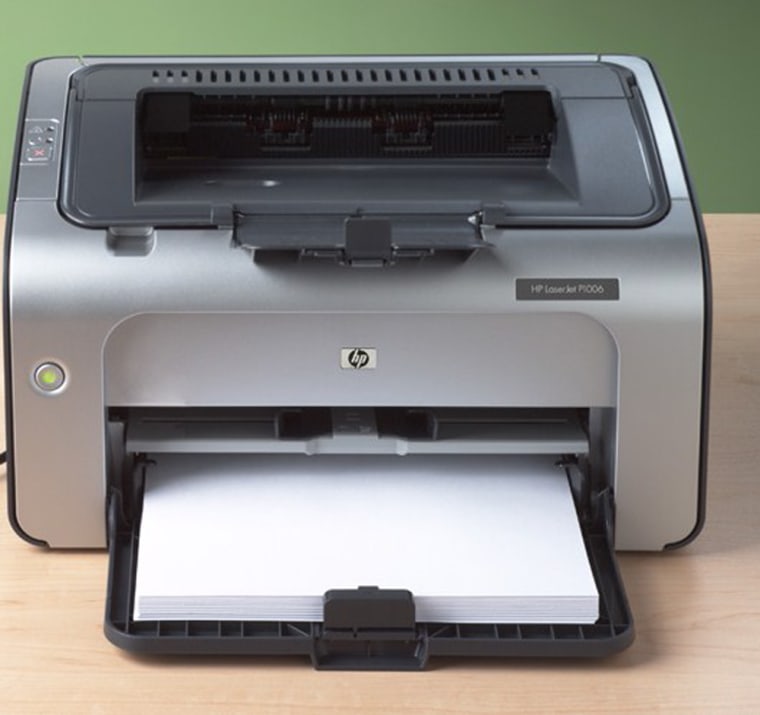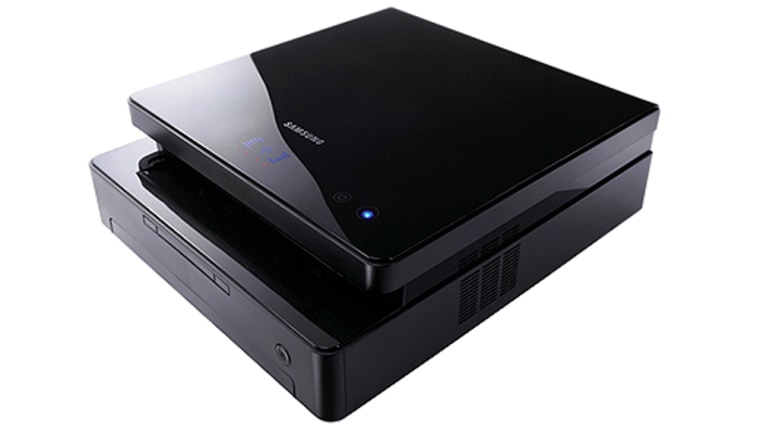With its high-gloss, black finish and its compact size, Samsung’s ML-1630 seems like a work of art that would be as much at home in a gallery as in a home.
What is the ML-1630? It’s a monochrome laser printer. That’s right: a printer, not exactly as exciting as a flat-screen TV or a GPS device.
But the look and design of the $200 printer is one of the things that has helped set it apart in a small, but growing, home market for what are known as personal laser printers. HP, Brother, Canon, Oki Data and Lexmark are among the many companies that produce them.
The space needed for such printers is less than for their corporate siblings, making them a good fit in small home offices or on crowded desktops.
The ML-1630, for example, is about 13 inches wide, 15 inches deep and under 5 inches in height; Another stylish printer, HP’s P1006, is under 14 inches wide, 12 inches deep and is 7.65 inches in height.
The cost of personal laser printers, both monochrome and color, has been dropping in the past 12 to 24 months. Black-and-white lasers can start at under $100; color laser printers, priced at around $500 a year ago, can now be found for under $300.
Laser printers, which print more quickly than inkjets, “are getting more and more affordable, so that consumers can consider the purchase of a laser printer versus an inkjet,” said Keith Kmetz of IDC Research, which studies the printer market.
“Prices are rivaling that of what we’ve typically seen in inkjet prices,” he said. “Laser has always grabbed a small percentage of the consumer market. They’re gaining more interest because those starting price points have come down considerably, be it gradually, over the years.”

Ken Colby, Samsung senior product manager for office automation, said the company is seeing “high single- to double-digit growth in the home laser printer arena.”
The ML-1630’s sleek look is quite intentional, setting it apart from the rest of the pack, but also unifying it with the look of other Samsung products.
“One of the approaches we’ve taken with printers is trying to integrate the design that we’ve been known for with our TVs and some of our other consumer electronics,” Colby said.
Even the marketing approach for ML-1630 was different than for other Samsung printers. Last fall, Samsung initially offered the ML-1630 for sale in Apple retail stores only. Soon, the printer will be in stores such as Best Buy and Circuit City, Colby said.
The printer’s look “is meant to be an integrated solution, so when you look at our (computer) monitor and our printer, those two go well together. Or, if you look at a laptop, whether it’s from us or somebody else, it’s meant to go together.”
Tricia Parks, CEO of Parks Associates market research firm, said inkjet printers still win “hands down” in popularity among consumers, and multi-function inkjets, which print, scan, copy and fax, are the most popular type of inkjet.
“Laser printers do a nice job, and they’re faster than inkjets, but they’re still more expensive than other printers, and that matters a lot.”
It may matter more in a slowing economy.
“What we have seen is that people are keeping their printers for longer,” said Colby.
Laser printers, which “can last from seven to 10 years,” he said, are being held onto for about five years; inkjets’ life cycles are three to five years, he said.
“The printing industry is in a time where consumers are hesitant to replace their units,” he said. “The biggest challenge for us is to convince them why they should upgrade their machines.”
Kmetz agrees. “Consumers are saying, ‘This is my wallet that I’m spending with, and do I want to make an investment into PCs and printers, or rely on what I have, which seems to be good enough for me to continue to use?' "
True cost depends on usage
Cartridges are the biggest cost tied to home printing, no matter what type of printer you own.
“The cost of toner cartridges varies from product to product, but a $200 laser printer might have a cartridge that runs from $50 to $75,” and produce 1,500 to 2,000 pages, said Kmetz.
“If you produce a lot of pages, you’re going to go through that cartridge quickly. You might go through cartridges three to four times a year, or it could be more than that.”
Not surprisingly, Colby of Samsung, takes a different view.
“With an inkjet cartridge, you can print 200 to 400 pages, whereas a laser toner cartridge may print 2,000 pages,” said Colby. “So, you may replace two toner cartridges in a year, versus six to eight for an inkjet printer.”
Of course, both men say, what is better and most cost-efficient for individuals depends on what their printing needs are.
The need to print
During this week, when the Earth, its care and future are getting lots of attention, it’s natural to wonder: Can we get by with printing less than we do?
Kmetz of IDC thinks that home consumers “may not be printing as much as they used to.”
“In a lot of schools, papers are submitted by e-mail; many teachers and professors don’t look for a written paper document of a report or analysis,” he said.
And with GPS devices in vehicles becoming more common, “Are folks no longer going to MapQuest and printing out directions, because now they can hop in the car, and the GPS will talk to them the whole way?” he asks.
Are you printing more now at home than you did a year ago? Five years ago? If you are, what types of things are you printing out? E-mails? Taxes? Reports? Drop me a line by e-mail. Responses — which I will not print out — may be shared in a future column.
